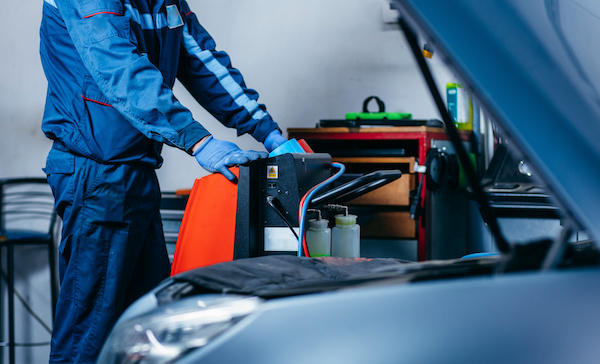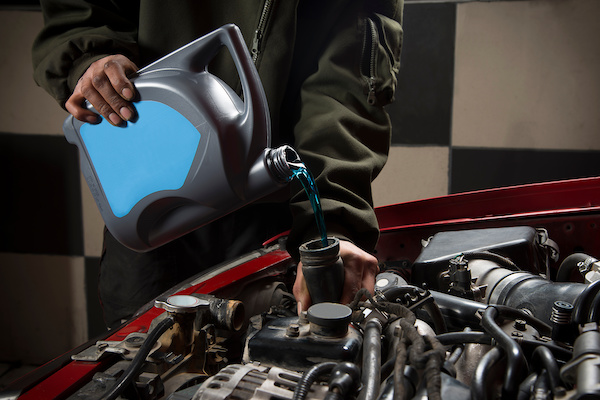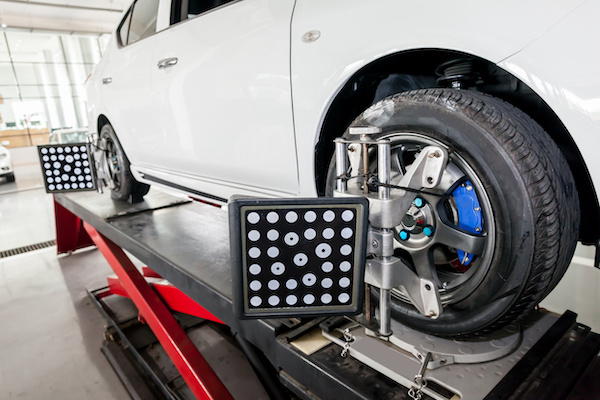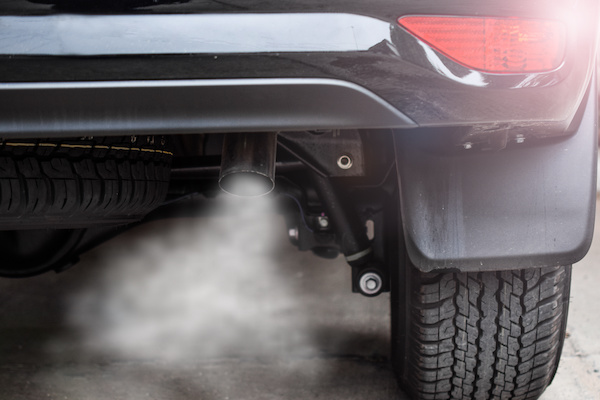Posted on 12/21/2022

To drive smoothly and seamlessly, your car’s engine needs to stay at a stable temperature range. To make that happen, a fluid called coolant/antifreeze gets pushed throughout the engine to regulate the temperature. Unfortunately, the coolant doesn't stay effective forever. Over time, contaminants and grime can build up in the cooling system. A coolant flush can solve this problem and protects the engine from corrosion, keeping it in the best shape possible. Besides a simple inspection, how can you tell when you need a coolant flush? Low Coolant You can pop open the hood and visually check your coolant levels. If the fluid looks too low, you may have a leak. Be sure to check if any bright-colored fluid is around or under your vehicle. We can also check for you when bringing your vehicle into Airpark Auto Pros. Bad Coolant Quality Another sign that may trigger a need for a fluid flush is if you find the coolant to be contaminated or discolored. Eng ... read more
Posted on 9/29/2022

The cooling system is a vital system in our automobiles – it keeps the engine safe and operable by stabilizing its temperature. A key part of the system is coolant/antifreeze. Over time, the solution will break down and become less effective at cooling. Can Coolant Expire in the Bottle? When you buy coolant at an auto supply shop, it typically has a shelf life of 1-5 years, depending on the product. The manufacturer is required to put an expiration date on the bottle, so don’t worry if you forget. Always look at the expiration date before adding the solution to your car. Can Coolant Expire in a Car? Coolant degrades over time in your engine. As it flows in and out of the engine, it can pick up metals, dirt, and debris. Most automakers recommend flushing your coolant every 30,000 miles. Dirty coolant can corrode cooling system components and cause leaks. Old and ineffective coolant can also have a reduced boiling point, which can lead to engine overheating. Signs ... read more
Posted on 8/24/2022
.jpeg)
The braking system is a critical part of the overall safety of your car. That is why it is so important to regularly inspect and service it when necessary. Keep an eye out on the top 7 signs of brake problems so that you can keep you and your loved ones safe: 1. Spongy Brake Pedals - Spongy or soft brake pedals are an indication that you have a brake fluid leak. In some cases, it means you have air or water in your brake lines. 2. Pulling Left or Right - If your vehicle pulls to one side of the road when you decelerate, it can be caused by sticky calipers, worn pads, low brake fluid or air in your brake lines on one side. 3. Grinding Sounds - Any unusual sounds that your brake makes signal a worn part. For example, brake pads have wear indicators that squeal when they’ve worn down to a certain point. If they sound like grinding, there might be no more pad material left. 4. Vibrations When Braking- When brake rotors get too hot, they are at risk of ... read more
Posted on 7/27/2022

Do your vehicle's tires need aligning, balancing, or both? Although the two processes are often carried out at the same time, they're two different procedures that together help to ensure your tires operate optimally. What is Wheel Alignment? The wheels on your vehicle are angled to provide the best balance of grip, safety and tire longevity. Over time, mainly if the vehicle is driven over rough, uneven surfaces, the tires can gradually move out of alignment. Poorly aligned tires may cause: Uneven tire wear. Steering that pulls left or right The steering wheel isn't straight, even when the vehicle is driving in a straight line. Problems with braking and handling. What is Tire Balancing? A tire should have the same amount of load at the base at every stage of its revolution. Tires that are worn unevenly, damaged tires, or tires that have been kept on a stationary vehicle for a long period of time are all likely to develop an uneven weight profile. Even new tires have ... read more
Posted on 5/2/2022

Color can play a significant role in determining a problem within your engine or exhaust system. Your vehicle emissions should practically be invisible for the most part. If your car, SUV, or truck spews out an unusual color of exhaust smoke, it can indicate various problems ranging in severity. At Airpark Auto Pros, we want to keep you educated on what these colors of exhaust smoke mean and what kind of repairs you may need from us. Blue/Gray Smoke When your exhaust smoke appears blue, it is an indication that engine oil is leaking into the combustion chamber and being burned. Sometimes, this can be caused by leaky valve seals, damaged piston rings, worn cylinder walls, leaking turbo seals or a stuck PCV system. Please get your vehicle to our auto repair shop for proper diagnosis and seamless engine repairs. We'll repair your leak and refill your car with fresh and clean oil. White/Light Gray Smoke If the smoke looks thin, wispy, and white, it can just be water vapor fro ... read more